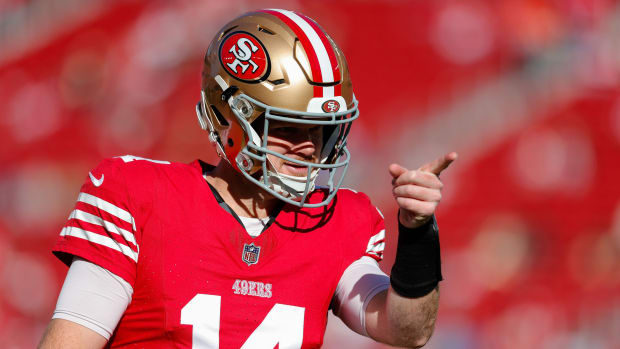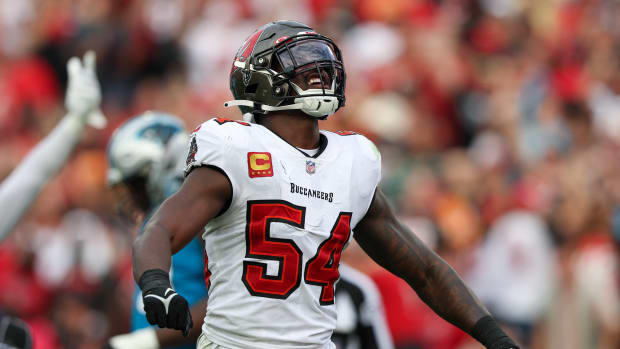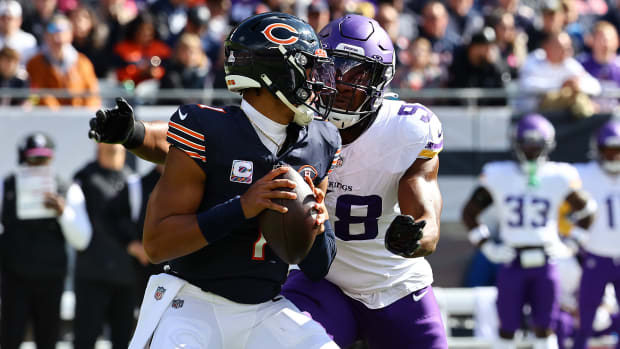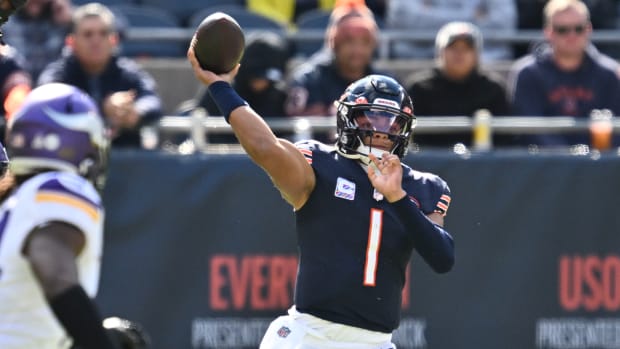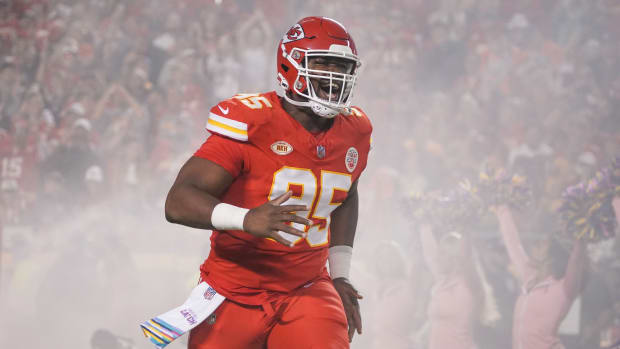Scouting Cleveland: A Never-Ending QB Competition
1. Unless Robert Griffin III has somehow learned how to be a dropback quarterback over the past 18 months, he has no chance in Cleveland. Or anywhere else. Prior to 2015, RG3 had shown no feel for the nuances of moving within the pocket. He never could sense pass rushers and keep his eyes downfield. He didn’t understand how a play’s route concepts interacted with the coverages he was reading. And remember, these struggles all occurred under smart passing-game coaches such as Jay Gruden, Sean McVay, and Mike and Kyle Shanahan. Hue Jackson is another high-level offensive coach, so Griffin has yet another opportunity to learn. But what Jackson already knows—and will be reminded of once the season kicks off—is that his vastly mechanized system only works if the quarterback is willing to play on schedule from the pocket.
2. Whether it’s Griffin under center now or Josh McCown under center later, Cleveland’s dearth of experience at wide receiver will be a problem, especially if Josh Gordon doesn’t produce. The two silver linings that are at least visible right now are first-round rookie Corey Coleman, simply because he’s a first-round rookie (new blood!), and tight end Gary Barnidge, because he was a proficient seam route runner in 2015, and seam routes are a staple of Jackson’s passing attack.
• BROWNS CAMP: In RG3 We Trust, for Now
3. If the Browns can get a second-round pick or better for tackle Joe Thomas, they should trade the nine-time Pro Bowler. Thomas is still the league’s soundest blocker in terms of technique and awareness, but he turns 32 in December and will probably be 34 before the Browns can construct a workable foundation around him.
4. Stalwart veteran Alex Mack is now a Falcon, making Cameron Erving the new center. Yikes. The 2015 first-rounder struggled mightily when thrown into the action at guard last year. Erving’s mechanics were nowhere near honed, and that really compromised his anchor against bull rushers. Now he’s handling the more complex duties at center, which, to be fair, is his natural position. If the Browns have this callow of snapper paired with RG3, they’ll get destroyed by disguised blitzes.
5. Much has been made about this front office’s enthusiasm for advanced analytics. The question that must be asked: How will the analytics be applied? Old-school football evaluators aren’t against analytics as a whole. Anyone smart enough to earn a decision-making job in the NFL is also smart enough to know that more information is better than less information. But more information is not better than misinformation. Analytics run a serious risk of producing misinformation whenever they’re applied to elements of the game that must be judged and critiqued within a greater context. Grading how a player performed on a given play, for example, doesn’t tell the whole story. It works in baseball where it’s pitcher versus batter and the spatial area in question is the 216.5 square inches of home plate. But in football, it’s never just one player versus another, and the area at hand is 6,400 square yards of field. There are infinitely more variables. More variables amount to greater margins of error. And remember one other thing: in baseball, there aren’t many secrets. A trained eye can tell what type of pitch was thrown, and the results are clear to everyone. In football, we can’t always know what play was called or how a player was specifically coached to perform it.
6. Expect a lot of highs and lows from Cleveland’s defense early this season. New coordinator Ray Horton’s scheme is rich in volume and complexity, particularly with its third-down packages. Horton’s track record says he’ll feed the bulk of his scheme to his players right out the gates and let them learn under fire, even once regular season games kick off. Horton actually did this with the Cardinals in 2011, after the lockout had wiped out most of the offseason preparation time. The approach eventually paid off. The Cardinals started 1-6 and gave up 26.1 points a game, but after that they went 7-2 and allowed just 18.3 points.
• JOE HADEN: LeBron and the Cavs Show the Way
7. It’s always easier to scheme pressure when you have corners you trust on an island. And it’s easier still if you have a corner you can trust against No. 1 receivers. Horton had in one in 2011, with Patrick Peterson. And he expects to have one here in Joe Haden. At his best, Haden is one of the most fluid hip pocket defenders in football. The concern, of course, is his health. He missed 11 games in 2015 with head, rib and finger injuries and spent most of this offseason recovering from ankle surgery. It’s imperative that Haden be well; the rest of Cleveland’s secondary is riddled with questions.
8. What are those questions, exactly? Well… Is 33-year-old corner Tramon Williams in decline? That appeared to be the case in the second half of last season. Can Pierre Desir stabilize his hot-and-cold bump-and-run coverage? He got beat deep a few times in 2015. Can former Dolphins second-rounder Jamar Taylor carve out a role? What about 2014 first-rounder Justin Gilbert? Both have been busts (Gilbert of huge proportions). Things are even more precarious at safety. Centerfield playmaker Tashaun Gipson is gone. In his place is Rahim Moore, who couldn’t even stay on the field in a two-deep-safety scheme for Houston last year. If Moore can’t survive, fourth-year backup Jordan Poyer will get a look. At strong safety, cagey veteran Donte Whitner has departed. At the very least, there will be a downgrade in awareness here. In Whitner’s stead will be either this year’s fourth-round pick, Derrick Kindred, or last year’s fourth-rounder Ibraheim Campbell.
• BREER’S INSIDER NOTEBOOK: The Ongoing Growth of Griffin
9. Second-year nose tackle Danny Shelton is a critical component of the front seven. Horton prefers classic two-gap 3-4 concepts, which means the fleet-footed Shelton must anchor the point against double-teams. Shoddy run defense felled this team under the previous regime. Changing those fortunes begins with Shelton.
10. The Browns have a lot of bodies to choose from as edge rushers: Armonty Bryant (after his four-game suspension), Paul Kruger, 2015 second-rounder Nate Orchard, 2016 second-rounder Emmanuel Ogbah, 2016 fourth-rounder Joe Schobert, and, of course, 2013 high first-rounder Barkevious Mingo. But is this a case of quantity over quality? Almost always, the answer is yes. Because if the quality was there, the quantity wouldn’t be in play. (Orchard probably doesn’t get drafted if Mingo and Kruger played well. Ogbah might not get drafted if Orchard showed more as a rookie. Etc.) Horton’s pressure packages focus on sending disguised pass rushers up the middle. That’s a saving grace because, while there’s at least some talent amongst this outside linebacking group, not a single player has shown he can bend the edge consistently.
Question? Comment? Let us know at talkback@themmqb.com
































